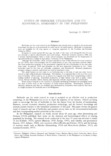Herbicide use for weed control in the Philippines has already been accepted in the production technology but has yet to be promoted for wider use by the small farmers. Herbicide recommendations are available for 18 crop species or categories approved by the Fertilizer and Pesticide Authority (FPA).
Research on weeds started 68 years ago; the bulk of the early work during the first 33 years was devoted to species identification and weed biology. Herbicide research started in 1948, and it became institutionalized when a weed control program was developed by the Department of Agricultural Botany, College of Agriculture, University of the Philippines.
Although the herbicides 2,4-D, monuron and diuron were found effective for weed control in the late 1950s, there were probably very few small farmers, if any, who used them until the 1960s. The food production program of the government triggered the use of herbicides on rice and other food crops. In general, 2,4-D and butachlor are the most important herbicides in rice. Other herbicides used for the crop are trifluralin, oxadiazon, and thiobencarb. Bormacil, glyphosate,
paraquat, dalapon, atrazine, and diuron are used for plantation crops.
The small farmers are not ready to use herbicides due to the lack of cash and other factors related to high yield production technology. Nevertheless, it is expected that in the next five years, more herbicides will be used in rice as farmers in irrigated areas shift from transplanting to directseeding method of planting. Intensified production of high valued crops such as garlic, onion, cotton, African oil palm, rubber, banana, and sugarcane will also require the use of herbicides.
Weed science research in the country is constantly developing techniques for managing weeds but there is little work on the economics of weed control practices. Nevertheless, research is relatively advanced and there are available data developed by researchers which indicate that there is a bright prospect for herbicide use in the Philippines.

